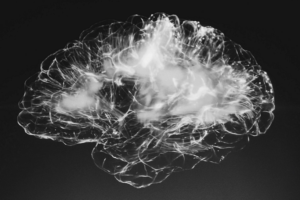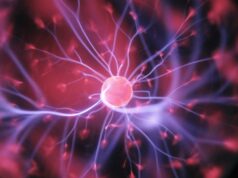
A recent meta-analysis demonstrated that cervical non-invasive vagus nerve stimulation (nVNS) is a safe and effective method for acute pain relief in migraine and cluster headache. “Non-invasive VNS could be an alternative technique for patients unwilling to take their medication,” concluded the authors, Yin-Hsuan Lai, Chiehfeng Chen (senior author) and colleagues from Taipei Medical University, Taipei, Taiwan.
Published in Neuromodulation, the paper highlights that 983 patients from six trials were included in the analysis. In terms of acute treatment, nVNS was found to be effective in achieving a pain-free status within 30 minutes (odds ratio [OR]: 2.27; 95% confidence interval [CI]: 1.16-4.44; p=0.02), as well as a pain-relief status within 30 minutes (OR: 1.8, 95% CI: 1.17-2.78; p=0.007) and 60 minutes (OR: 1.93; 95% CI: 1.2-3.1; p=0.006).
Moreover, the pooled estimate suggested that nVNS yielded significantly decreased abortive medication use (OR: 0.61; 95% CI: 0.41-0.92, p=0.02), and pain-free status in ≥50% of treated attacks (OR: 2.15; 95% CI: 1.27-3.66; p=0.005) compared to sham treatment. According to Lai and colleagues, there were no significant differences in decreased headache days, adverse events, or satisfaction between the stimulation and sham-device cohorts.
Discussing the prevalence of migraines and headaches, Lai et al stated that globally, the latter is approximately 14.7%, while cluster headaches constitute 0.1-0.4%, and tension-type headaches constitute 20.1%. “The cost of headaches are estimated to be at least US$17 million per year in the USA,” add the authors. They write that the direct costs constitute outpatient services, medications, office or clinic visits, laboratory and diagnostic services, and management of treatment side effects, while indirect costs result from lost productivity in the workplace.
Regarding the mechanism of action of nVNS in the treatment of headache, Lai and colleagues posit that it is “largely elusive and likely multifactorial”. They explain that while the impact of implanted VNS on seizure-associated headaches was first reported over 15 years ago, new non-invasive VNS has been developed.
“The cervical nVNS device produces a low-voltage electrical signal that delivers a maximum output current of 24V and 60mA. Two stainless steel contact surfaces coated with a conductive gel enable the delivery of stimulation to the neck in the vicinity of the vagus nerve,” write Lai and team. In light of its novelty, the investigators add that future guidelines are currently under development, which should help clinicians make informed decisions on the appropriate treatment for their patients.
In relation to the current study, the authors describe how they searched the Medline, Embase, and CENTRAL databases until January 29, 2019, and applied a random-effects model to report on the aforementioned outcomes.
Alluding to certain caveats of the analysis, Lai and colleagues note that it was only based on six RCTs, lacks generalisability to children, pregnant females, and people outside Europe and the USA. Further, they write that further research could test efficacy for other headache types.
Despite these limitations, Konstantin Salvin, University of Illinois at Chicago, USA, comments on the paper, emphasising a “great need” for non-pharmacological treatment of severe headaches. Acknowledging that neuromodulation may represent the answer, Salvin speculates: “Compared to the conventional neuromodulation approaches [deep brain stimulation, spinal cord stimulation, and peripheral nerve stimulation] that use implantable devices, non-invasive neuromodulation appeals to the general public due to its lower risks and perceived convenience.”
Salvin put forward that the next step will be to collect real-life clinical experience, with the hope that it “equals or exceeds” that from randomised trials. “Perhaps non-invasive vagal nerve stimulation will become a standard and common treatment that will be considered alongside oral medications, injections and interventions.”













